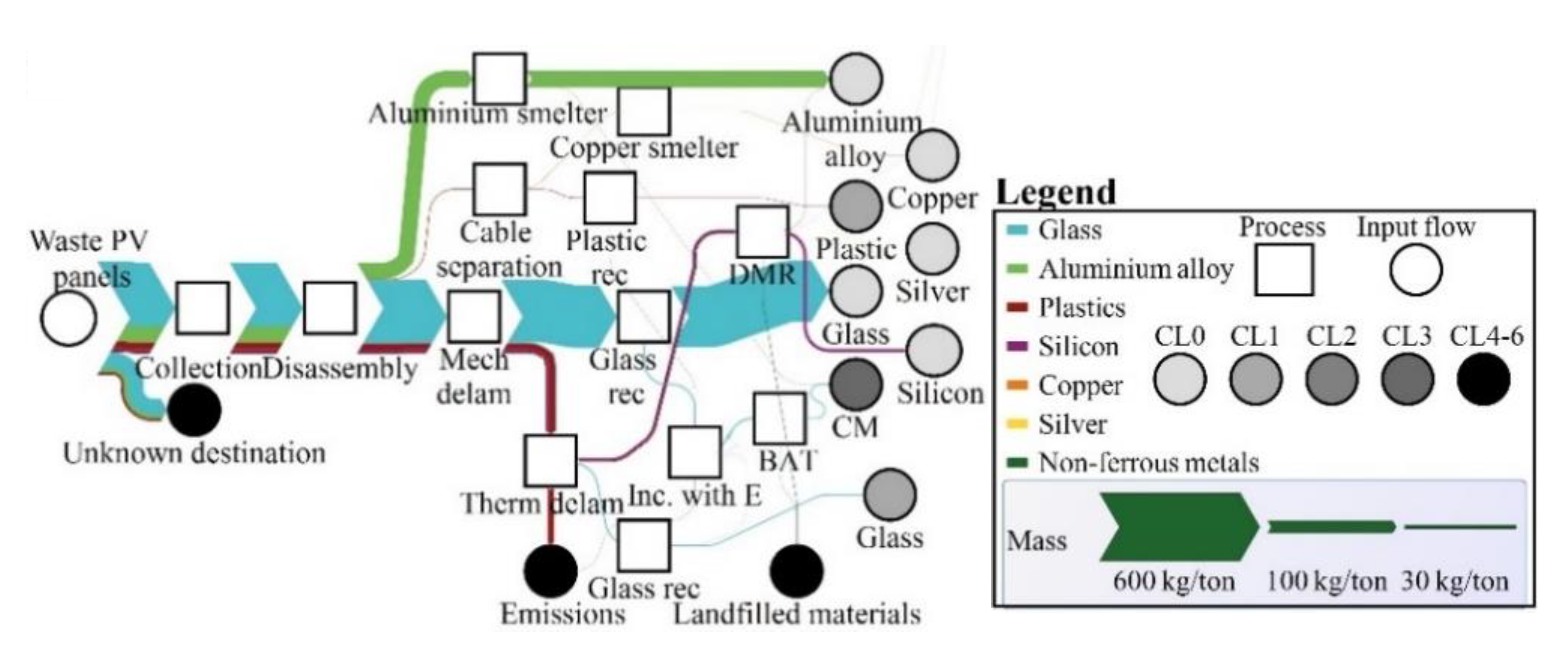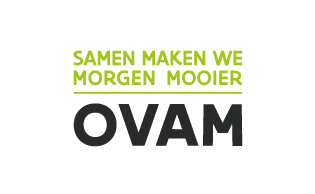The end-of-life phase of PV modules from a circular economy perspective
Abstract
G. Thomassen, J. Dewulf, S. Van Passel
Various waste management scenarios are available for photovoltaic (PV) modules. In these scenarios, materials are recovered with varying efficiency. In this study, the recovery rates of ten different end-of-life scenarios, ranging from a basic landfill scenario to an extensive recycling scenario, were calculated using a combined material and substance flow analysis. Here, the flows of both materials and their underlying substances were studied, starting from the moment the PV module becomes waste until the materials arrive at their final destination (e.g. landfill or the environment) or are recycled for application in a following product lifecycle. Figure 1 illustrates the Sankey diagram of the most extensive recycling scenario.
The end-of-life scenarios included both conventional technologies and innovative technologies. To include learning effects, which the new technologies are still expected to experience, four different learning effect scenarios were introduced.
Scenarios that focused on recycling low-value materials towards low-value secondary applications could have a mass-based recovery rate of 67%. Material-specific recovery rates were therefore introduced in addition to cascading levels, which classified the quality of the secondary application. Cascading level 0 indicated closed-loop recycling, where the secondary material can be used for the same application as the primary material. Cascading levels 1, 2 and 3 indicated open-loop recycling to high-value, medium value and low-value applications, respectively. Without this differentiation, all recycling is treated ‘equally’ and no incentive was provided to recycle materials to high-value applications instead of low-value applications.

Figure 1. Sankey diagram of the most extensive recycling scenario (DMR: dedicated metal recycling; Inc. with E: Incineration with energy recovery; BAT: bottom ash treatment; CM: construction materials; Mech: Mechanical; Therm: Thermal; Chem: Chemical; Delam: Delamination; Rec: Recycling; CL; Cascading level)
To incorporate these differentiations in the recovery rate, an economic value recovery rate and an embodied energy recovery rate were introduced, where the economic value and embodied energy of all materials recovered in their secondary applications were calculated. While the mass-based recovery rate did not show a preference for more extensive recovery of high-value materials, this preference could be observed if the economic value recovery rate or embodied energy recovery rate was used. Additional targets are therefore required to avoid cascading of valuable materials and to avoid the economic cost and environmental burden of the production of virgin materials. The collection rate of the end-of-life PV modules was identified as most important parameter to improve the mass-based recovery rate, economic value recovery rate and embodied energy recovery rate.
An interesting path for further research would be the supplementation with economic and environmental impact studies of the different scenarios, in addition to an outlook on the relevance of materials such as silicon in PV modules in order to better prioritize materials and products for recycling.
The policy recommendations of this paper are fourfold:
- Use a combined M/SFA to enable tracking the materials and substances in the value chain
- Differentiate for the different materials by using material-specific mass-based recovery rates or economic value recovery rates or embodied energy recovery rates
- Differentiate for the different quality of the secondary application, by using cascading levels or economic value recovery rates or embodied energy recovery rates
- Incorporate the effects of technological learning using multiple scenarios when comparing conventional with new technologies

.png)






